Eric Cathcart – Harmonious Light
Posted on May 3, 2021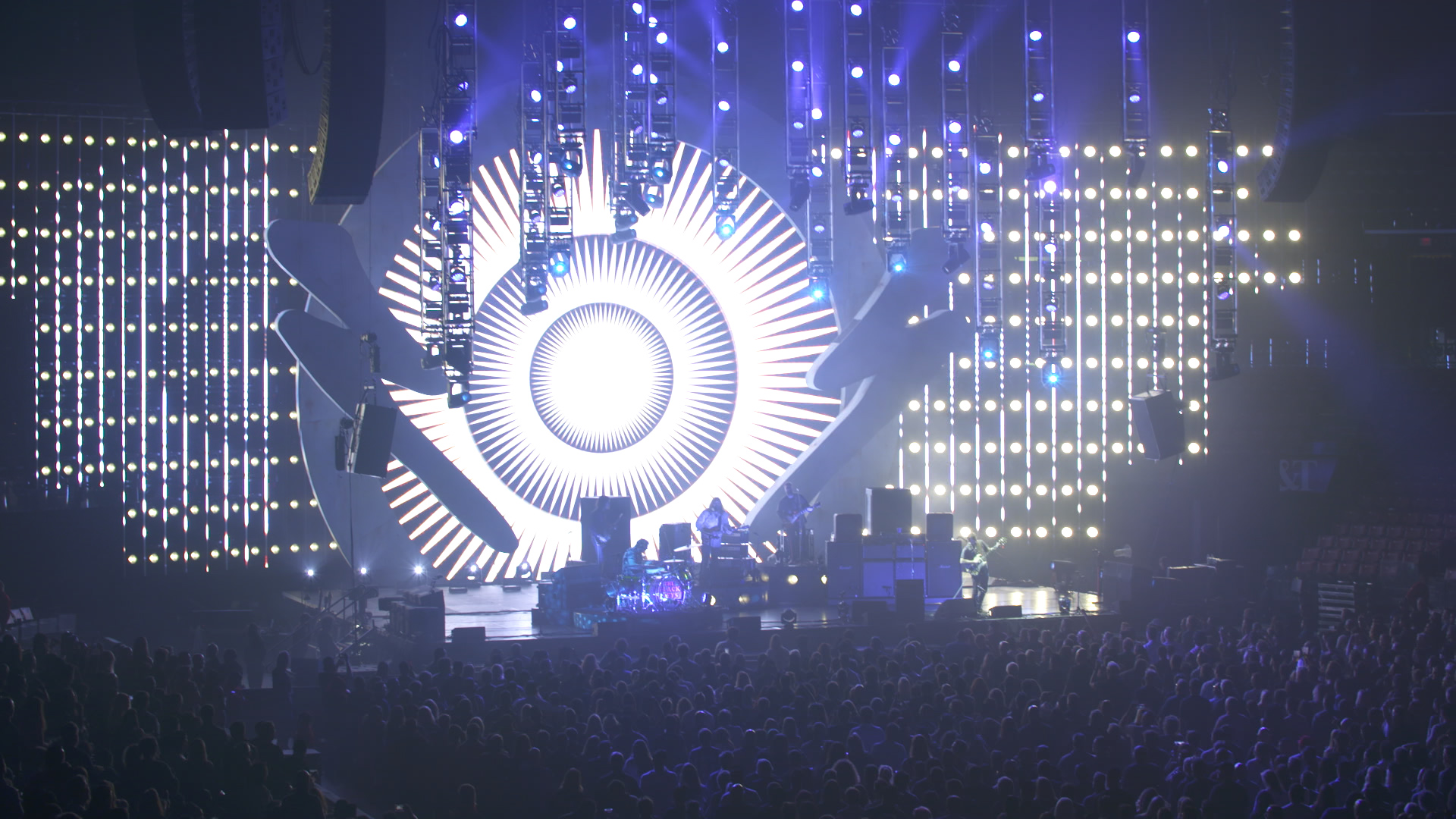
During the dark cold days of the COVID-19 lockdown, this Kansas-City based designer found one small consolation. Cut off from his busy pre-pandemic touring schedule, he was, for the first time in many years, able to sit back and, as he puts it, “listen to music recreationally.”
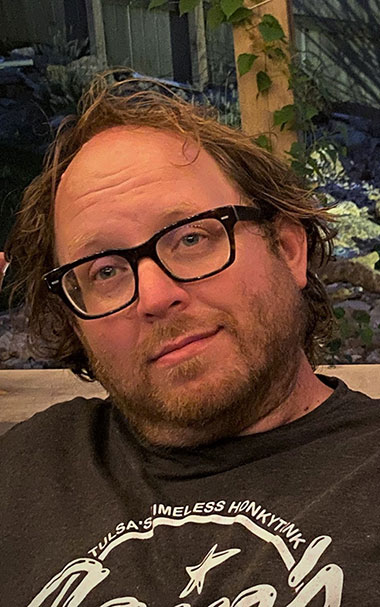 For Cathcart, the act of listening to music as a lighting designer takes place on myriad levels, each of which delves deeper and deeper into his client’s work as the creative process unfolds. Though he enjoys every song, the process cannot, by any stretch of the imagination, be described as “recreational.” Rather, it is more of an exploration aimed at uncovering the powerful forces that drive the sound.
For Cathcart, the act of listening to music as a lighting designer takes place on myriad levels, each of which delves deeper and deeper into his client’s work as the creative process unfolds. Though he enjoys every song, the process cannot, by any stretch of the imagination, be described as “recreational.” Rather, it is more of an exploration aimed at uncovering the powerful forces that drive the sound.
It is only by absorbing those forces, believes Cathcart, that a design can fulfill its true mission: to reflect the heart and soul of the music in light.
Following this philosophy, Cathcart has been able to harmonize his designs with widely different styles of music. He demonstrated this in the year leading up to the pandemic, creating warm, retro tungsten looks on some tours, as well as intense and massive (44 custom lighting wall frames, 24 moving torms, 28’ tall scenic lightning bolts, and a 35’x45’ video surround arc) for the multi-Grammy winning band, the Black Keys.
In addition to Black Keys, Cathcart has worked for a number of other artists as a designer or director since starting his company, Big Time Lighting Design, 12 years ago, including Van Halen, Garbage, Devo, Thievery Corporation, Cage the Elephant and Sliversun Pickups. He’s absorbed, reflected, and visually harmonized with their music each step along the way.
Looking back on some of these projects, he shared insights into the musicality of light.
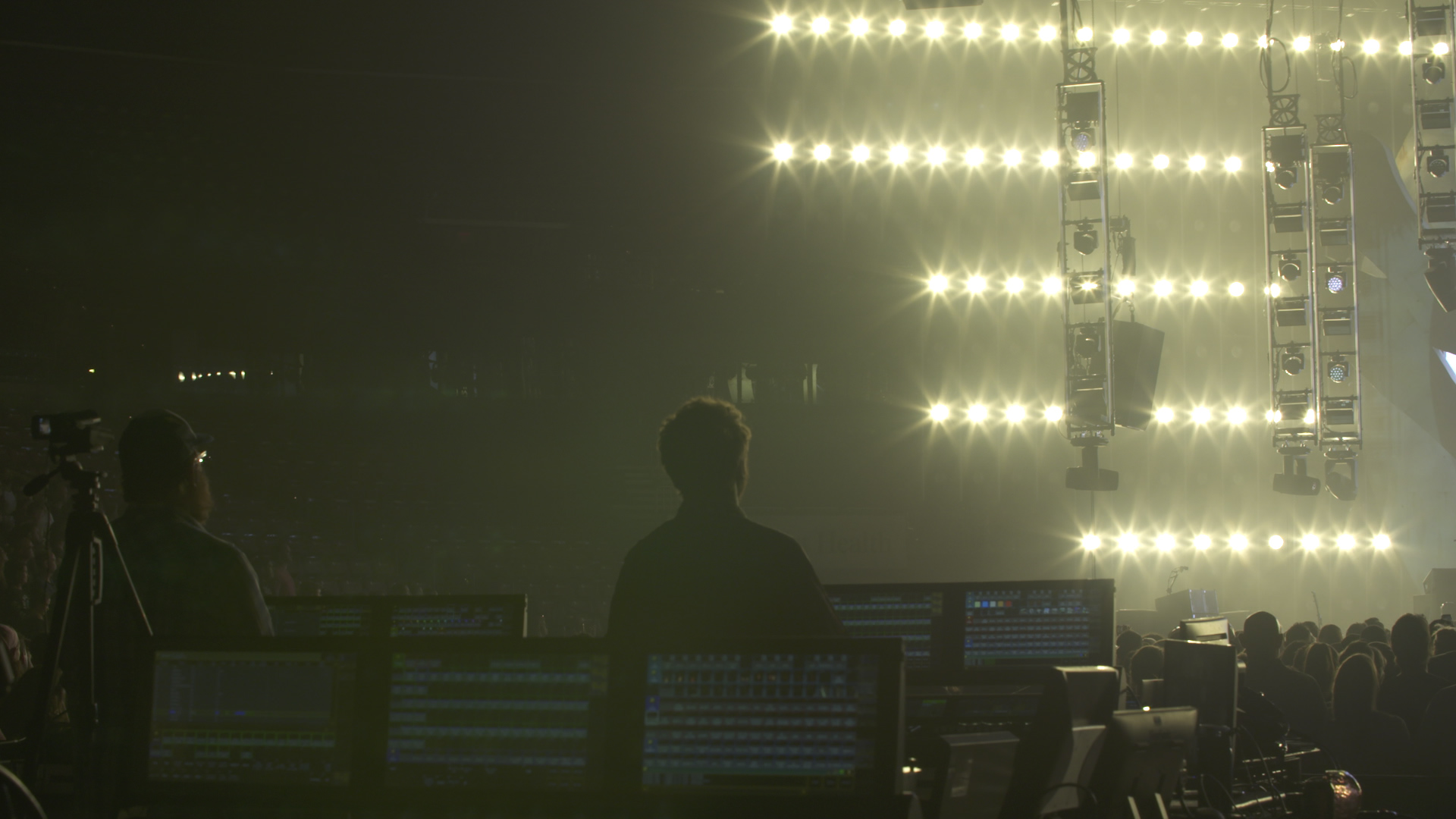
Your design with Mike Grant for The Black Keys’ “Let’s Rock Tour” had big powerful looks with massive walls of light. What was the vision behind that design?
“Big powerful looks! With an electric chair on the cover and a title of “Let’s Rock,” what else is there to do for the supporting tour? I had been kicking around an idea of a design that didn’t have any fixtures on traditional trussing for a while. That’s where the torms came from. When Mike and I got together for our first session on that show, he had the back wall idea roughed out. We spent just a few minutes combining our ideas, and locked it down. Sometimes you just know. That’s not to say that we were done quick, there were a bunch of details on how it all fits together to hash out.”
You collaborated closely with Mike on that tour. What’s the key to a successful collaboration?
“Mike and I have worked on a few projects together now. Overall, we have pretty much the same basic social, musical, and artistic aesthetics, so the vision is easy to collaborate on. When we work on a design together, we program our shows ourselves and build content together. Typically, we will work on the same songs at the same time. This one he did video and I did the lighting.
“Sometimes, we would be on the same page from the beginning, on other songs we did, I’d scrap what I was doing to match up to his content – and for others, vice versa. There is a trust and a level of respect that the two of us have always had. It’s tough to put in words. Sometimes when Mike and I are working we are able to work on several songs, barely say a word to each other and then go to play them back and everything is spot on.
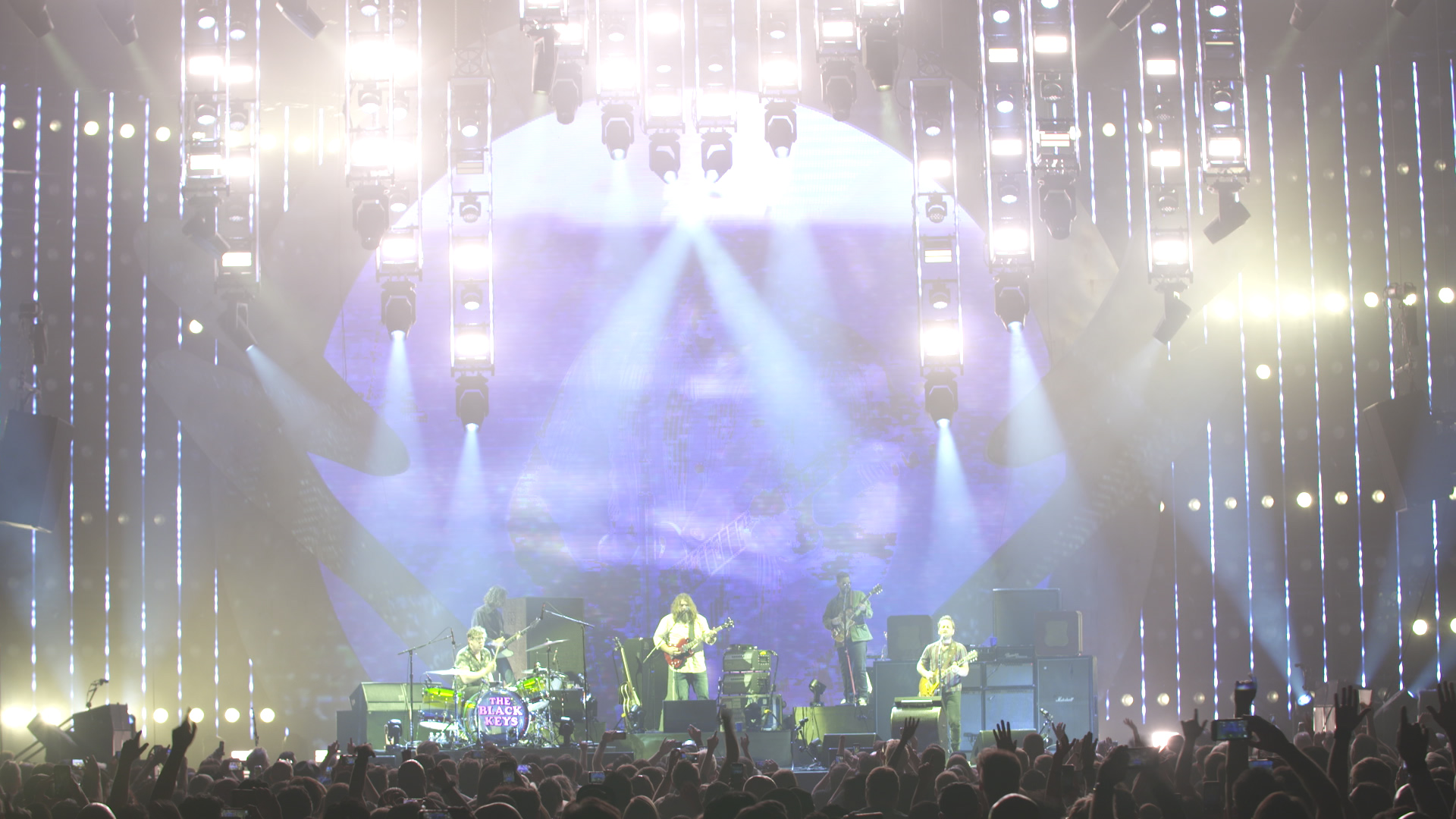
“I have had the fortune to be able to work with a few others in the position of programmer and lighting director. Those situations were a bit different, I was still collaborating, occasionally being able to put my two cents in, but working within their vision. I think that it’s important to know your role in a collaboration.”
Does your creative process work differently when you’re design a big show like that verses a more subtle retro-looking tour?
“Not necessarily. I wouldn’t say that I have a particular design process. At the heart of all of my designs is the music. No matter who I am designing, I will immerse myself in their music. If the music has a retro feel, it’s only natural that the vibe of the lighting design should be retro. My main objective is to get down to the soul of the music.”
So, do you then have to like a client’s music to do a good job lighting it?
“I find that I’m able to get into the music by the time it’s all said and done. I’ve been very fortunate that I have already been listening to and I am a fan of most of the bands that I have worked for. There are a few artists that I really wasn’t expecting to enjoy but sure enough, their music would still get stuck in my head. Having a year off from programming and touring because of the COVID pandemic has reinvigorated my love of music. I was beginning to get burned out on years of not having the time to listen recreationally.”
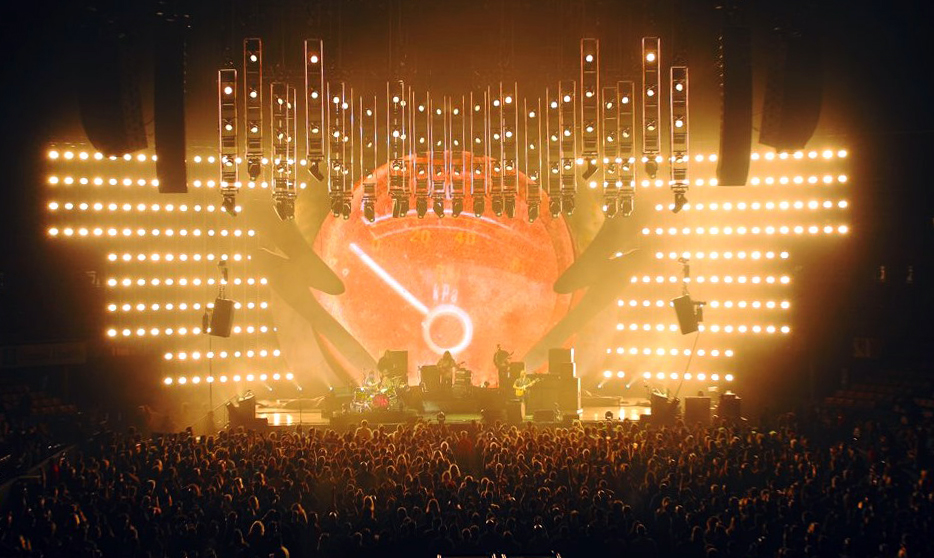
What are your feelings about LED video walls and projection video? What kind of role do you see each playing in design?
“I use both for different tasks. There are things that you can do with one that you can’t do with the other. I love a giant projection cone shooting over an audience from FOH that lights the bands faces before hitting the projection surface. I love using a low LED wall that will completely silhouette the band and blind the audience when the time is right. On the last design for The Black Keys, we used both LED and projection throughout the whole show. I actually just had an idea using LED and projection together and was side tracked while I sketched it out!”
Let’s talk about colors. Do you have a favorite color? Is there a color you find most difficult to work with?
“I don’t have a favorite color, but when I go back and look at pictures, you would think I’m partial to a blue-magenta color scheme. I like to remain neutral to colors so that I use what is necessary. Working with Cage the Elephant pushed my use of color. Matt (lead singer Matt Shultz) would come out to FOH during the day and tweak colors with me.”
We were impressed with the way you used set pieces on the last Black Keys tour. Do you think set pieces are becoming more scenic elements in their own right?
“I have to give Mike most of the credit for the bulk of the set on that one. Most of the time my lighting and video rigs just become the set, so it was nice to have that set to play with. Those set pieces absolutely became scenic elements. We used it as a projection surface, as well as lighting it up on occasion. This was the first time that I had ever used an inflatable. Having a larger than life set piece appear out of nowhere is a nice gag to have in your pocket. I liked how we were able to change the entire vibe of the stage just by changing how the set was lit.”
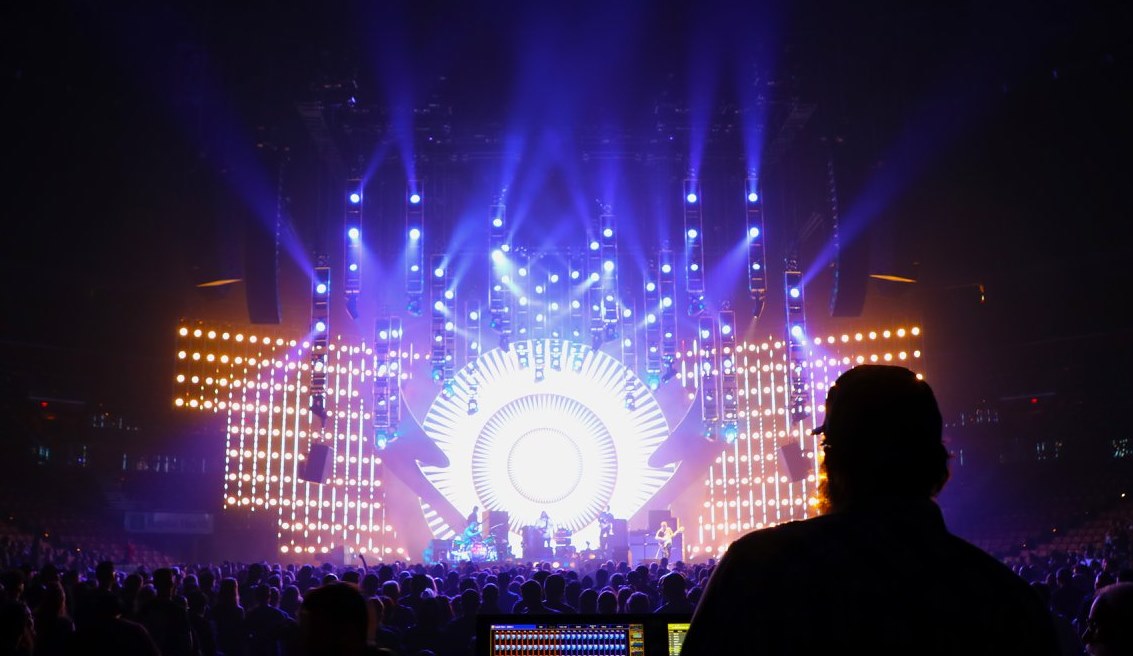
How often do you busk?
“I never busk for a tour. I like for my show to look polished. I’m not saying that it isn’t possible to busk a tour and have it look polished, I’m saying that I can’t do it. It seems like when I am busking I run out of fingers to do everything that I want to smoothly. So, for a programmed tour, I like to be able just hit that GO button and have a few dedicated bumps when necessary.
“That being said, I will usually program myself a punt page just in case the band decides to pull a rabbit out of a hat, and I always have band specials and crowd lights fixed on every page, but that’s about the extent of it on a tour. I spent about ten years as a local production lighting guy. I was busking on a nightly basis. Back then, it was mostly 120k par rigs, so it was much easier and quicker to program.
“I think the key to busking is to read the song, and not to be afraid of just leaving a look alone. A few years ago, I did quite a few festivals as the house LD and I found that over the course of time I programed less and less when busking. After programming pages and pages of looks overnight until the sun comes up on nights leading up to a festival – this was before there was readily available pre-viz software — it would work out that way most of the time. I would just end up just using the last page that I programmed for the entire festival.”
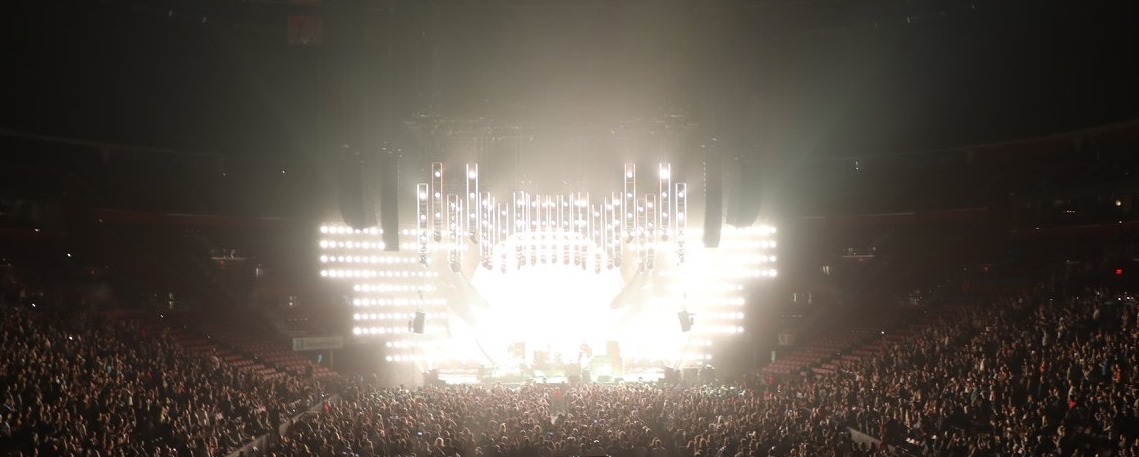
You’ve used tungsten looks on some tours? Why is that?
“I love the color of tungsten. It’s just a warm and comfortable color. It seems like the vast majority of the artist that I work with have styles that lend themselves to just raw tungsten lighting. I was actually trying to step away from using it so often because I didn’t want to be pigeonholed as the tungsten guy, and for the unnecessary power consumption. Fortunately, LED fixtures are getting better at both recreating the color and achieving a comparable dimmer curve.”
A really nice thing about a lot of your shows is how you created a retro vibe without looking old fashioned or dated. How do you accomplish that?
“Typically, I put a conscious effort into not having a bunch of things moving around. Not too many years ago I did a tour with The Darkness that was 180k. By using a modern console and thinking about programming conventional lighting from the standpoint of how I have adapted to automated lighting, I was able to put a new spin on a conventional show.
“I have a fondness for all of the fixtures that are gathering dust in the back corner of the shop. Mike Grant had brought back my love of older, less desired fixtures with his use of scoops when I first met him on The Black Keys. When he and I sent out the plot for our first collaboration, we populated it with suggestions , but asked the vendors to use whatever dusty conventional fixtures that they had laying on the shelf.”
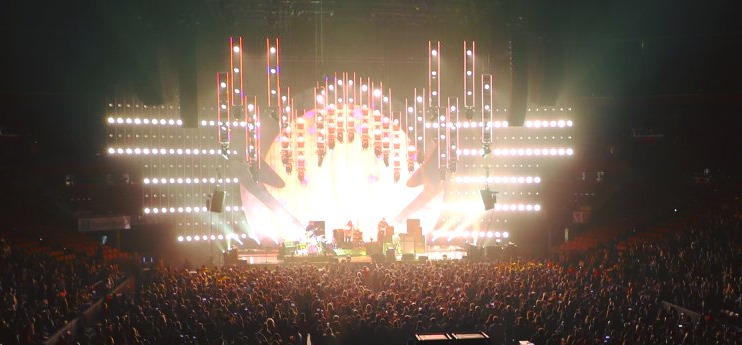
Is there a design element that you always look at first when you begin working on a show?
“Not particularly, I typically visualize some sort of overall shape for the design. From there I decide if what I am thinking is a truss structure, set pieces, video panels, or whatever it may be. Because I own media servers, I actually try not to add video first so that there doesn’t appear to be a conflict of interest between the design and rental sides of my business.”
How do you get inspired before you design?
“By listening to the music. I like to dig in to the theme of the latest album and bring it to life visually, and then I will start digging into the catalog. At the end of the day, it is about visualizing the music. I wish that I could say that while I am walking around on days off that I take inspiration form my surroundings.”
Looking at your entire career to date is there a show that stands out as your biggest learning experience? The one that had the greatest influence on your future projects?
“I wouldn’t say there was a particular show that was my greatest learning experience. When I look back at the first tour that I ever did, I am amazed at how little I knew. I was the LD, the drum tech and one of three drivers that split driving the cube van with backline. It was all local production, and every day I had a completely different rig. I had sent out a 120k lighting plot, but that was a pipe dream!
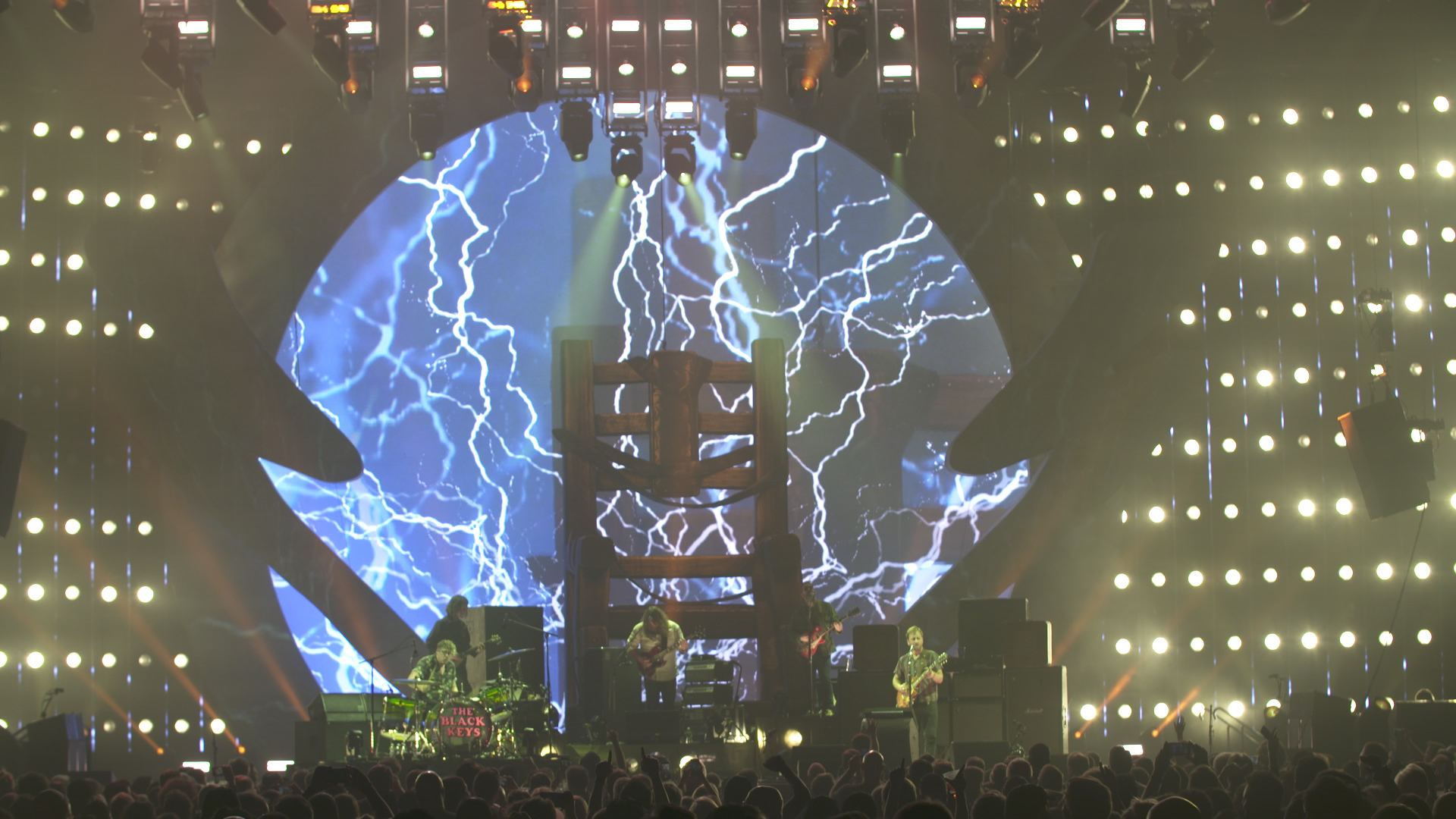
“After that I worked for a local production company based in Austin, TX. In the early 90’s we were putting par can rigs in everywhere, I was probably doing 4-5 shows a week, with a differently configured 120k par rig every time. The other thing we did a lot was deliver spotlights to arenas all over Texas. Between looking at 120k from every angle possible, reconfiguring lamps and gel in every way I could think of, symmetrically, asymmetrically, and watching the shows that I delivered spots to, I started to gain these building blocks that I still refer to in my designs.
“The last Keys tour absolutely had the most ‘new technology’ going on with it. We pushed it pretty hard with the tracking lighting fixtures and the automation communicating. There were also several media servers being intertwined together as one. I had a couple of months of head scratching after selling the idea to the band!
“Fortunately, our vendors really dug in and got their hands dirty to make it all happen. As far as influence on future projects, that’s tough. I think I have always built off of the last project for the next. Whether it’s the lessons that I learned about programming, or the technology and work flow that I followed, my last project is always a big influence on my next.”
Early on you did a Spring Fling tour with four bands and gave each of them distinct looks. Based on that experience, do you have any advice on how to make a rig flexible?
“That was another collaboration with Mike. If I remember correctly, there were pretty tight change overs, so there wasn’t much time to do anything too drastic. The main thing we did was to just start out with the lighting rig low and raise the trim as we went. A couple of bands had backdrops, and Cage the Elephant had pods that stayed on the ground behind them. Eamonn McKiernan was doing two bands and I was doing two bands, and we have vastly different programming styles, so that was able to add an element of the same rig looking different for each band.”
How did you get started in lighting?
“I was in High School when I got started. For some reason I just gravitated to the technical side of things. It kind of annoyed me that because I knew how to turn the lights and PA on, they never gave me the big parts. Or maybe I just wasn’t as good of an actor as I thought I was!
“Either way, it seems to have worked out. When I went to college I was a technical theater major and the university had just completed construction on a performing arts center that I started working at. Initially I was more interested in audio. When we had bigger shows at the PAC, we would bring in real stage hands, so during the summer I started working with them. That labor company also had lighting and a little bit of PA. I think they recognized the desire that I had and fairly quickly asked me to start rigging, and focusing par cans.
“One day I asked the lead lighting guy if I could run the board for one of the bands at a benefit that we were doing and I was hooked. At about that time my dad had moved to the Bay Area. So, looking for a change of pace, I took a Greyhound from Kansas City to San Francisco. While I was out there I looked up a local lighting company in the telephone book, because I remembered seeing their name on a road case, and cold called them and wound up with a job. At that point I didn’t even know what a lighting designer was, I just wanted a job touring.”
What do you think you would have done it you didn’t become a lighting designer?
“That’s a tough question, I’ve had the desire to be involved in music since grade school. I believe it was about third grade that my stated profession was that I was going to be a rock star. For a brief moment I wanted to be involved with movies, I looked into becoming a studio engineer. I played in several bands that never got past the second rehearsal. I really never thought about having a “real” job. When I started doing lighting full time I saw that I had money in my pocket, and my friends that were still in bands didn’t. From that point I pretty much didn’t pick up an instrument for about twenty years.
What are the three personality traits every designer needs?
“Self-deprivation, low self-esteem, and a twisted sense of humor. Obviously that’s in jest. Personally, I have quite a few self-esteem issues, as many creatives do. When a design is rejected for any number of reasons, it can pay a heavy toll on your psyche. When you put your everything into an idea to then be told that someone else’s idea is better, it hurts. So, I think resilience is important. You need to be able to roll with it. Just because the song is screaming amber to you, the guy that wrote the song might have been seeing green when he wrote it.”
How would you like to be remembered as a lighting designer?
“I just want to be remembered as a lighting designer! I’m not sure if I am leaving a mark, nor am I attempting to. There are so many great projects going on by so many other talented designers constantly that I’m sure I’m lost in the mix. I wish I was better at remembering names, I see articles in the magazines for all of these fantastic productions. I am always honored when I get to share some space with my colleagues.”